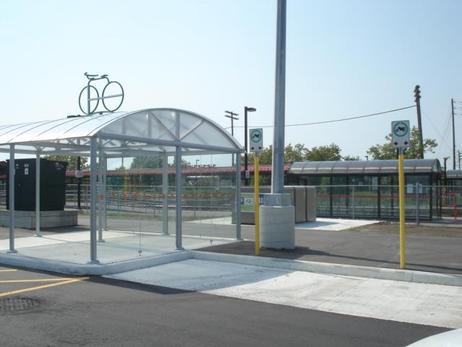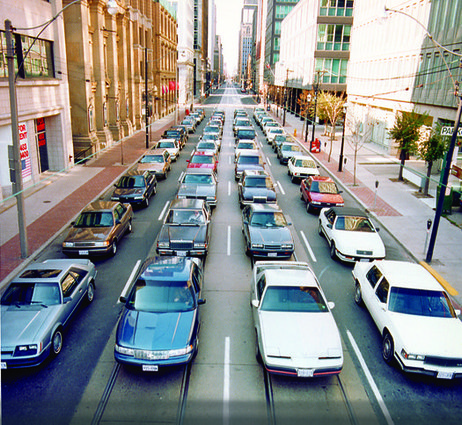Park and Ride — From Driver to Rider
Convincing car lovers to switch their morning drive for a morning ride may seem like a difficult task. It's not impossible, though. What does it take to turn a driver into a rider? Swedish researchers explain, "The experience of pubic transport should match the qualities people love about cars."
What is Park and Ride?
Cars can take us anywhere we want, any time we want, comfortably, quickly, and reliably. It's easy to get in and go, and travelling with luggage is also very convenient. A working mass transit system must figure out how to bring these mentioned qualities to trains, subways, and buses — and they are one step closer to closing the deal with drivers. Park-and-ride schemes are a great way to solve the alarming traffic problems in big cities like Toronto. While there are certain disadvantages, overall the scheme is beneficial for both citizens and the city when properly carried out.
A group of Swedish researchers led by Lauren Redman was the first to explore the complicated transit situation with a focus on park-and-ride programs. They came up with three steps that should help transit agencies increase the number of riders and their satisfaction.
Perception
Transit agencies believe that riders value the same principles that the agencies do and therefore that what works for the agencies will work in real life as well. Wrong. Researchers observe,
Too often transit operators evaluate service quality based on criteria they consider important — even if riders don't feel the same."
Motivation
Agencies should target the motivations that make people choose a car over a bus. Most drivers prefer the comfort and convenience of their own cars, but ticket integration programs that make rides simpler and cheaper could encourage them to make the switch.
Potential
Agencies would be wise to recognize that not all drivers have the same potential to become riders.
Agencies should target their programs accordingly. There are many areas with choice-riders who will take note of station and security upgrades or changed schedules, and these changes can motivate them to start using public transit regularly.
Test Riders
The group of researchers recruited 106 people who typically drive to work and convinced them to switch to public transit for a month with a 30-day prepaid fare pass. The results recorded in the survey were beyond positive.
After having used public transportation for a full month, participants reported significantly greater satisfaction than they had initially reported — that is, before the test period—in several attribute-specific measures.
On measures of safety, travel time, cleanliness, seating, and overall experience, the test riders finished the month with significantly higher levels of satisfaction than they thought they'd feel before the switch.
You can view the complete survey results here.
Toronto
In Toronto, park-and-ride programs have been introduced by the TTC and GO Transit. Both companies work hard to ensure that drivers' travel experience are smooth and enjoyable.
GO Transit
There are more than 65,500 parking spots available at GO stations, and to date they are free of charge. The price for your parking spot is included in your train fare. Those who don't use a car to get to the station but rather ride a bike can store their bikes in covered shelters or a couple secure bike rooms. GO also subsidizes local bus fares for those who decide to use municipal public transit to get to the GO station. If you prefer to come last-minute, you can buy a reserved parking spot for $80.00 per month, $480.00 semi-annually, or $960.00 annually — including all taxes — for a minimum six-month term. Please note that reserved parking is not available at every station. Revenue from renting reserved car spots represents only around 6 per cent of the total revenue at GO.
While GO has been improving their old parking lots and building new parking structures, people have been wondering how long the free parking will last. Bruce McCuaig, Metrolinx CEO, suggested that that free parking might not be available forever:
"When we look at parking, it can either be parking on a broad basis or it can be very specific, like the parking around transit stations. Yes, it's something we're looking at. It's something we want to get input from the public, the municipalities and stakeholders on. We need to be able to see how it could have a place, or, if it doesn't have a place, why not."
The TTC
The TTC operates about 13,000 paid parking spots in total, and it also offers bike lockers for eco-friendly commuters. There are around 180 bike lockers available at each station. Parking lots are open Monday to Friday from 5:00 A.M. to 2:00 A.M. and free of charge during weekends and public holidays. There is no overnight parking available, so make sure your car won't be towed. Unlike GO Transit, the TTC cannot afford offer their parking services free of charge, since they are located in the city centre, where every square foot is scarce. TheTTC collects about $10 million annually, and in January, it raised parking prices by $1 — to $6 at the Don Mills station and to $4 at Kennedy.
While frequency and reliability are priorities for any working transit system, "critical incidents" such as a bad rush hour experience can turn riders away. Keeping the old customers and gaining new riders requires an understanding of the perceptions, motivations, and contexts that govern travel decisions. The emotional side of transit is as important — if not more important — than the physical concerns.
Yes, it's possible for car users to establish emotional and symbolic connections with public transit, and they might be ready for the swap. It's important to realize that this no small task, though.






